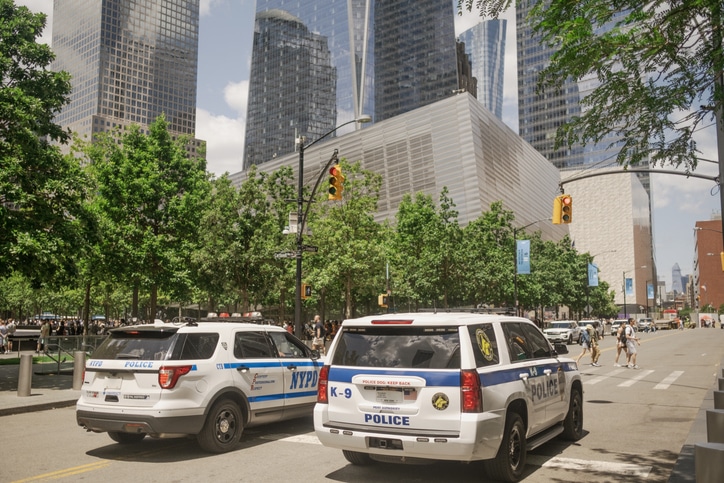Emergency vehicle upfitting has come a long way in recent years, evolving to meet the increasingly complex needs of emergency responders. From enhanced safety features to advanced communication systems, upfitting solutions are crucial in ensuring that emergency vehicles are equipped to handle a wide range of situations effectively.
In this blog post, TSC Upfitting will dive into the latest innovations in emergency vehicle upfitting, exploring key areas of advancement and customization options for different emergency services.
The Evolution of Emergency Vehicle Upfitting
A Brief Overview
Emergency vehicle upfitting refers to the process of customizing vehicles to meet the specific requirements of first responders. Historically, upfitting primarily involved installing essential equipment such as lights and sirens.
However, as technology has advanced, so too have the capabilities of upfitting solutions. Today, upfitting encompasses a wide range of features designed to enhance safety, communication, and functionality.
The Importance of Specialized Upfitting Solutions
Specialized upfitting solutions ensure emergency vehicles are equipped to handle the unique challenges first responders face. Off-the-shelf solutions may not adequately meet the needs of different emergency services, which is why customized upfitting is crucial.
By tailoring vehicles to the specific requirements of each service, upfitting companies can ensure that responders have the tools they need to perform their duties safely and effectively. At the same time, they are using new technologies to improve their current processes.
Key Areas of Innovation in Emergency Vehicle Upfitting
Enhanced Safety Features
Safety is paramount for first responders, and innovations in upfitting technology have significantly improved this area. From reinforced vehicle frames to advanced airbag systems, modern emergency vehicles are equipped with a range of safety features designed to protect occupants during a crash or collision. Additionally, technologies such as stability control and collision avoidance systems help drivers maintain control of their vehicles in challenging conditions.
Advanced Communication Systems
Effective communication is essential for coordinating emergency response efforts, and upfitting solutions play a critical role in ensuring that responders can communicate reliably in the field. Advanced communication systems, such as two-way radios and integrated computer systems, allow responders to share information quickly and efficiently. Additionally, GPS tracking systems enable dispatchers to monitor the location of vehicles in real-time, improving overall coordination and response times.
Vehicle Storage Tools
Storage space is at a premium in emergency vehicles, while many must carry a wide range of equipment and supplies. Innovations in upfitting technology have led to more efficient use of space, with custom storage solutions designed to maximize capacity while keeping essential items organized and accessible.
- Features such as slide-out trays, adjustable shelving, and secure locking mechanisms help responders quickly locate and deploy the equipment they need to perform their duties.
Updated Lighting Systems
Visibility is crucial for emergency vehicles, particularly when responding to incidents in low-light conditions or heavy traffic. Upgraded lighting systems, including LED light bars, strobe lights, and spotlight fixtures, help improve visibility and increase the visibility of emergency vehicles on the road. Additionally, programmable lighting systems allow responders to adjust light patterns and intensity to suit different situations, enhancing safety for both responders and other road users.
Customization Options for Different Emergency Services
Sirens and Public Announcement Systems
Sirens and public announcement systems are vital tools for alerting motorists and pedestrians to the presence of emergency vehicles. Different emergency services may have specific requirements for sirens and PA systems.
Depending on the type of emergency they typically respond to and the environments in which they operate. Customization options allow agencies to choose sirens and PA systems that meet their needs while ensuring compliance with local regulations.
Police Vehicle Upfitting
Police vehicles have unique requirements due to the nature of law enforcement work. Upfitting solutions for police vehicles often include features such as prisoner transport systems, weapon lockers, and integrated surveillance equipment. Specialized lighting and communication systems help officers perform their duties safely and effectively while on patrol.
Fire Truck and EMS Upfitting
Fire trucks and EMS vehicles require specialized upfitting solutions to support their roles in emergency response. Upfitting options for these vehicles may include equipment such as water pumps, hose reels, and medical cabinets. Finally, ergonomic design features help firefighters and EMS personnel access equipment quickly and efficiently, minimizing response times and maximizing effectiveness.
Emergency Vehicle Upfitting
Innovations in emergency vehicle upfitting have transformed the capabilities of modern first responders, providing them with the tools they need to perform their duties safely and effectively. Upfitting solutions are crucial in ensuring that emergency vehicles are equipped to handle a wide range of situations, from enhanced safety features to advanced communication systems.
By customizing vehicles to meet the specific requirements of different emergency services, upfitting companies help ensure that responders have the resources they need to save lives and protect communities.
Contact us today if you need emergency vehicle upfitting solutions tailored to your agency’s unique needs. Our team of experts can work with you to design and implement custom upfitting solutions that enhance safety, communication, and functionality for your first responders.



